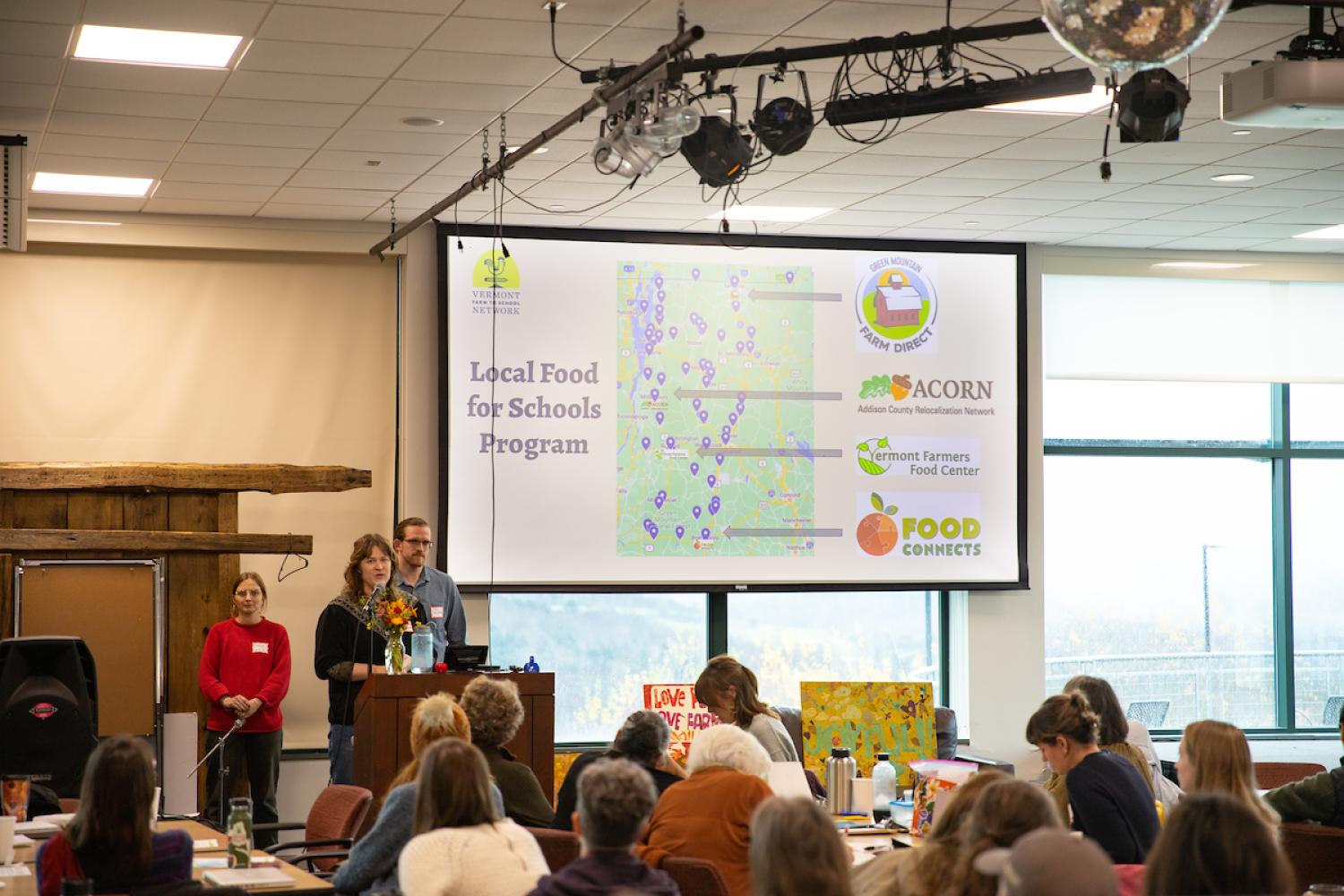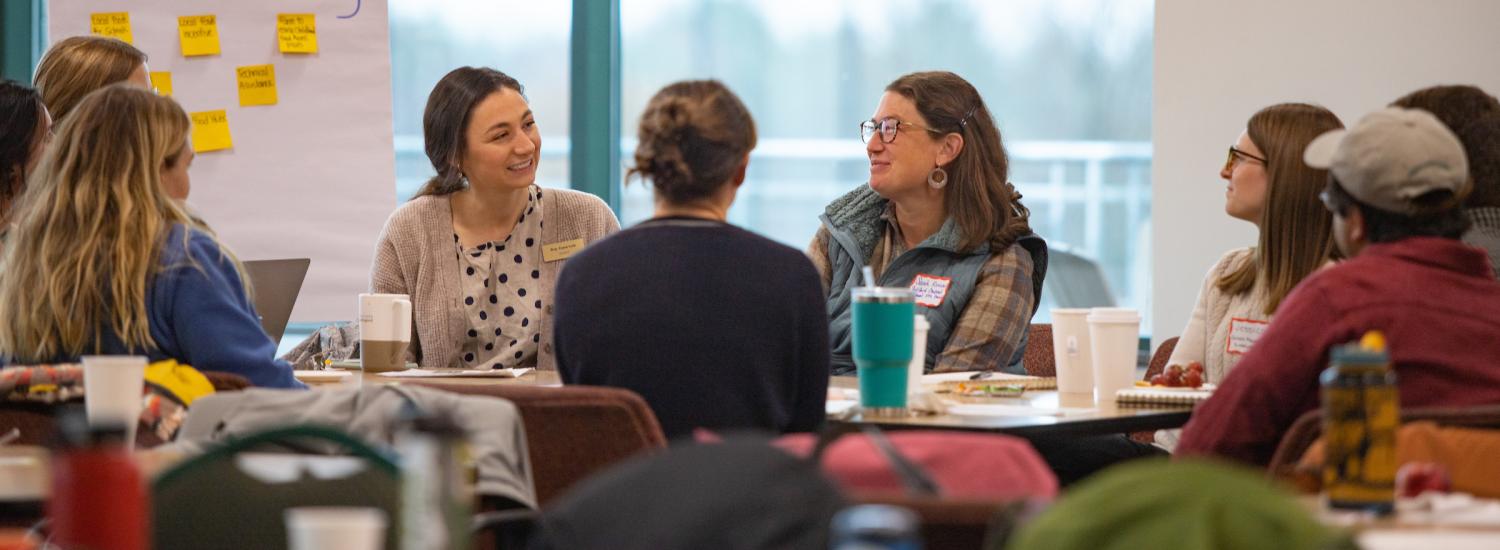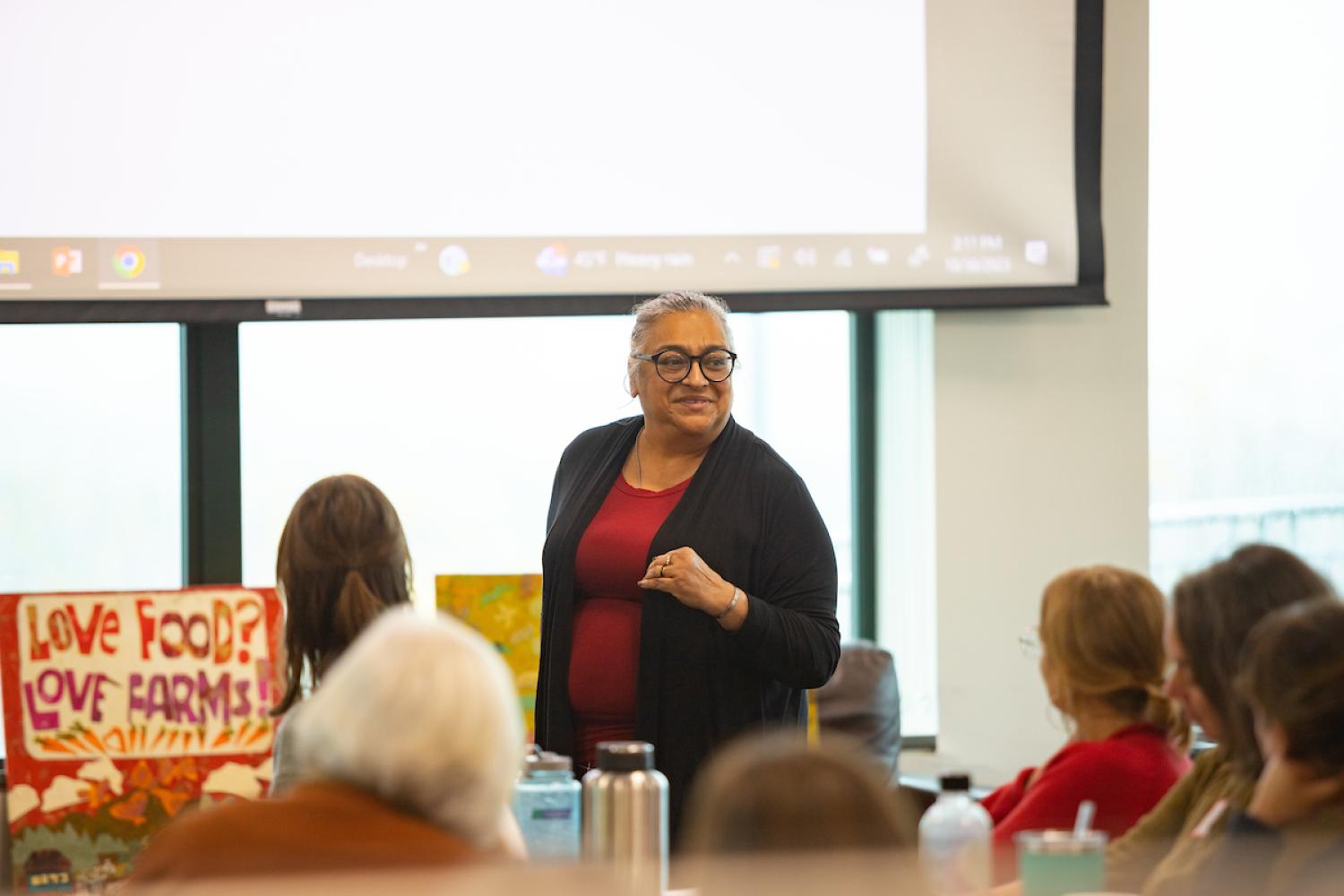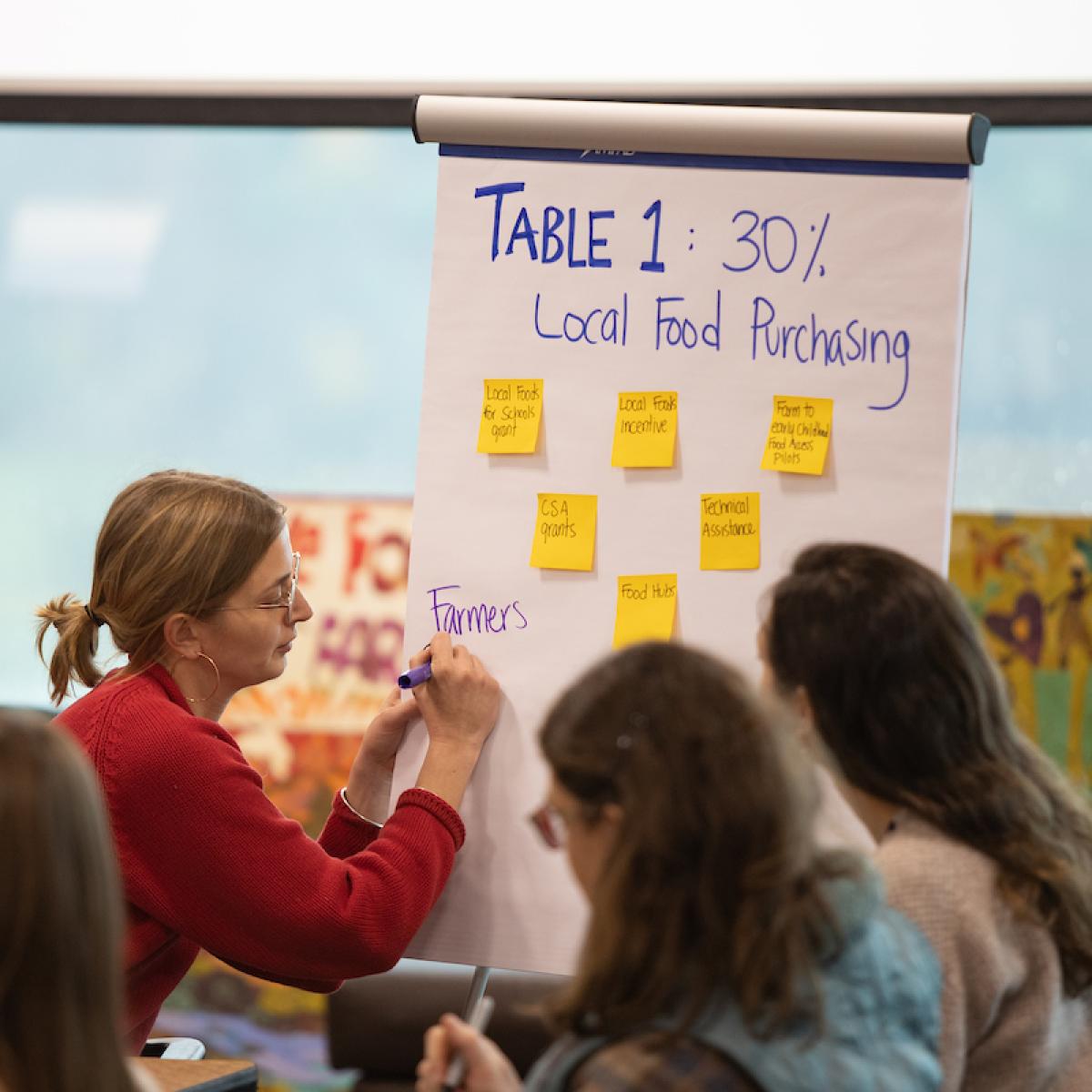Sharing & Aligning: New Ideas, Questions, and Opportunities
Small group breakout sessions allowed for deeper discussions surrounding community-based learning, farm to early childhood, equitable access, food system education, climate resilience, social justice, and reaching the ambitious goal of 30% local food by 2030. All these discussions lead to the collective goal of farm to school in every Vermont community, with many themes emerging:
- One key idea that came up in many group conversations: Who isn't at our table? How do we bring more new partners into this work? Who is not here, that could be or should be? Who used to be more involved, but for one reason or another has fallen away from this work? How do we continue to identify and cultivate new partners?
- Storytelling was a consistent theme in many conversations. It popped up in almost every group discussion, from sharing stories of student learning, to examples of successful local purchasing, to spreading the news about positive community impacts. The stories of farm to school will help make this work real for all audiences, and can demonstrate strategies for successful integration across the classroom, community, and cafeteria.
- Another common challenge: How do we find and take full advantage of our internal network relationships? How can network members see points of intersection and alignment within our shared work? By deepening our understanding of each other's work, and finding new ways to share, adapt, and cross pollinate, we can make better progress toward our goal.



